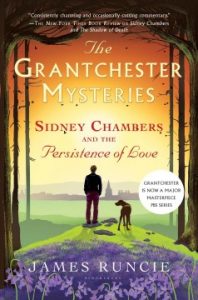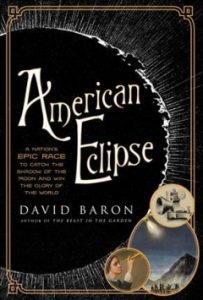Happy Friday, dear readers. And…happy summer? It looks as if my grumpy post about wearing sweaters may have finally persuaded Mother Nature to cut us some slack. So you can bet I’ll be whining about the heat very very shortly.
But, until then–and after then, and always–there are books. Here are some of the new titles that leapt onto our shelves this week and are eager to make your acquaintance!

 Eleanor Oliphant is Completely Fine: Here’s a book that’s been getting stellar reviews and press coverage since it was first announced, and seems to be an ideal pick-me-up for your summer reading list. Eleanor Oliphant struggles with appropriate social skills and tends to say exactly what she’s thinking. Nothing is missing in her carefully timetabled life of avoiding social interactions, where weekends are punctuated by frozen pizza, vodka, and phone chats with Mummy. But everything changes when Eleanor meets Raymond, the bumbling and deeply unhygienic IT guy from her office. When she and Raymond together save Sammy, an elderly gentleman who has fallen on the sidewalk, the three become the kinds of friends who rescue one another from the lives of isolation they have each been living. And it is Raymond’s big heart that will ultimately help Eleanor find the way to repair her own profoundly damaged one. Funny, breezy, and full of hope, heart, and humor, Gail Honeyman’s debut earned a starred review from Booklist, which said in its review “Walking in Eleanor’s practical black Velcro shoes is delightfully amusing, her prudish observations leavened with a privately puckish humor. But readers will also be drawn in by her tragic backstory, which slowly reveals how she came to be so entirely Eleanor. Witty, charming, and heartwarming, Eleanor Oliphant Is Completely Fine is a remarkable debut about a singular woman. Readers will cheer Eleanor as she confronts her dark past and turns to a brighter future. Feel good without feeling smarmy.”
Eleanor Oliphant is Completely Fine: Here’s a book that’s been getting stellar reviews and press coverage since it was first announced, and seems to be an ideal pick-me-up for your summer reading list. Eleanor Oliphant struggles with appropriate social skills and tends to say exactly what she’s thinking. Nothing is missing in her carefully timetabled life of avoiding social interactions, where weekends are punctuated by frozen pizza, vodka, and phone chats with Mummy. But everything changes when Eleanor meets Raymond, the bumbling and deeply unhygienic IT guy from her office. When she and Raymond together save Sammy, an elderly gentleman who has fallen on the sidewalk, the three become the kinds of friends who rescue one another from the lives of isolation they have each been living. And it is Raymond’s big heart that will ultimately help Eleanor find the way to repair her own profoundly damaged one. Funny, breezy, and full of hope, heart, and humor, Gail Honeyman’s debut earned a starred review from Booklist, which said in its review “Walking in Eleanor’s practical black Velcro shoes is delightfully amusing, her prudish observations leavened with a privately puckish humor. But readers will also be drawn in by her tragic backstory, which slowly reveals how she came to be so entirely Eleanor. Witty, charming, and heartwarming, Eleanor Oliphant Is Completely Fine is a remarkable debut about a singular woman. Readers will cheer Eleanor as she confronts her dark past and turns to a brighter future. Feel good without feeling smarmy.”
 The Grantchester Mysteries: Sydney Chambers and the Persistence of Love: Some time back, Lady Pole wrote about her appreciation of the Grantchester series, and, because I take all her literary advice to heart immediately, I myself have become fond of the full-time priest, part-time detective Sidney Chambers–and I hope you will, too! In this sixth installment, set in 1971, now Archdeacon Sidney Chambers is walking in the woods with his daughter Anna and their aging Labrador, Byron, when they stumble upon a body. Beside the dead man lies a basket of wild flowers, all poisonous. And so it is that Sidney is thrust into another murder investigation, entering a world of hippies, folk singers, and psychedelic plants, where love triangles and permissive behavior seem to hide something darker. Sidney is kept on his toes in this series of clerical who-dun-its, along with his old friend, Detective Inspector Geordie Keating. Between the disappearance of an historic religious text from a Cambridge college, and the later disappearance of Sidney’s nephew, and the burgeoning free love movement, which complicates a number of relationships in this deceptively quiet parish, this is a collection that series’ fans and newcomers alike will enjoy immensely. The New York Times Review of Books agrees wholeheartedly, saying “Taken individually, each of these clerical whodunits poses a clever puzzle for armchair detectives. Viewed as a collective study of British life as it was lived when Elizabeth II first ascended the throne, these stories present a consistently charming and occasionally cutting commentary on ‘a postwar landscape full of industry, promise and concrete.”
The Grantchester Mysteries: Sydney Chambers and the Persistence of Love: Some time back, Lady Pole wrote about her appreciation of the Grantchester series, and, because I take all her literary advice to heart immediately, I myself have become fond of the full-time priest, part-time detective Sidney Chambers–and I hope you will, too! In this sixth installment, set in 1971, now Archdeacon Sidney Chambers is walking in the woods with his daughter Anna and their aging Labrador, Byron, when they stumble upon a body. Beside the dead man lies a basket of wild flowers, all poisonous. And so it is that Sidney is thrust into another murder investigation, entering a world of hippies, folk singers, and psychedelic plants, where love triangles and permissive behavior seem to hide something darker. Sidney is kept on his toes in this series of clerical who-dun-its, along with his old friend, Detective Inspector Geordie Keating. Between the disappearance of an historic religious text from a Cambridge college, and the later disappearance of Sidney’s nephew, and the burgeoning free love movement, which complicates a number of relationships in this deceptively quiet parish, this is a collection that series’ fans and newcomers alike will enjoy immensely. The New York Times Review of Books agrees wholeheartedly, saying “Taken individually, each of these clerical whodunits poses a clever puzzle for armchair detectives. Viewed as a collective study of British life as it was lived when Elizabeth II first ascended the throne, these stories present a consistently charming and occasionally cutting commentary on ‘a postwar landscape full of industry, promise and concrete.”
 The Answers: Catherine Lacey has already established a strong reputation for herself as a genre-bending author, and this book shows her challenging conventions–literary, grammatical, social–with relish, gusto, and style. Her tale focuses on Mary Parsons, who is broke. Like seriously broke. Between an onslaught of medical bills and a mountain of credit card debt, she has been pushed to the brink. Hounded by bill collectors and still plagued by the painful and bizarre symptoms that doctors couldn’t diagnose, Mary seeks relief from a holistic treatment called Pneuma Adaptive Kinesthesia―PAKing, for short. Miraculously, it works. But PAKing is prohibitively expensive. So Mary, like so many of her generation, decide to scour Criagslist for work. And it is there that she finds a job…as Emotional Girlfriend in the “Girlfriend Experiment”―the brainchild of a wealthy and infamous actor, Kurt Sky, who is looking for a scientific solution for how to build and maintain the perfect romantic relationship, with himself as the constant. There’s a Maternal Girlfriend who folds his laundry, an Anger Girlfriend who fights with him, a Mundanity Girlfriend who just hangs around his loft, and a whole team of girlfriends to take care of Intimacy. As Mary falls deeper and deeper into Kurt’s ego-driven universe, Catherine Lacey gives us a brilliant feminist analysis of modern-day romance, society, and an utterly unique story that Vogue called a “darkly funny, tartly feminist look at the tender state of our bodies and souls in the Information Age . . . [Lacey’s] work …captures the absurdity of a culture that persists in thinking that enlightenment is a matter of the right purchase, hashtag, or Google search.”
The Answers: Catherine Lacey has already established a strong reputation for herself as a genre-bending author, and this book shows her challenging conventions–literary, grammatical, social–with relish, gusto, and style. Her tale focuses on Mary Parsons, who is broke. Like seriously broke. Between an onslaught of medical bills and a mountain of credit card debt, she has been pushed to the brink. Hounded by bill collectors and still plagued by the painful and bizarre symptoms that doctors couldn’t diagnose, Mary seeks relief from a holistic treatment called Pneuma Adaptive Kinesthesia―PAKing, for short. Miraculously, it works. But PAKing is prohibitively expensive. So Mary, like so many of her generation, decide to scour Criagslist for work. And it is there that she finds a job…as Emotional Girlfriend in the “Girlfriend Experiment”―the brainchild of a wealthy and infamous actor, Kurt Sky, who is looking for a scientific solution for how to build and maintain the perfect romantic relationship, with himself as the constant. There’s a Maternal Girlfriend who folds his laundry, an Anger Girlfriend who fights with him, a Mundanity Girlfriend who just hangs around his loft, and a whole team of girlfriends to take care of Intimacy. As Mary falls deeper and deeper into Kurt’s ego-driven universe, Catherine Lacey gives us a brilliant feminist analysis of modern-day romance, society, and an utterly unique story that Vogue called a “darkly funny, tartly feminist look at the tender state of our bodies and souls in the Information Age . . . [Lacey’s] work …captures the absurdity of a culture that persists in thinking that enlightenment is a matter of the right purchase, hashtag, or Google search.”
 Chuck Klosterman X: A Highly Specific, Defiantly Incomplete History of the Early 21st Century: Chuck Klosterman has written about, I think, nearly every subject in the human experience, from sports to politics to food to pop culture…and this last is the main topic of this latest collection of essays, culled from his writings in Esquire, Vanity Fair, GQ, and other media sources. What’s even neater is that Klosterman presents many of these articles in their original form, featuring previously unpublished passages and digressions that didn’t make the final cut in other outlets. Subjects include Breaking Bad, Lou Reed, zombies, KISS, Jimmy Page, Stephen Malkmus, steroids, Mountain Dew, Chinese Democracy, The Beatles, Jonathan Franzen, Taylor Swift, Tim Tebow, Kobe Bryant, Usain Bolt, Eddie Van Halen, Charlie Brown, the Cleveland Browns, and many more cultural figures and pop phenomena. These are interesting times in which we live, friends, but Klosterman somehow manages to keep them interesting, engaging, and somehow just a little bit worthwhile. Plus, the page-ends are black, giving this book a very exciting ninja quality that I’m sure you’ll appreciate. Paste magazine wrote a terrific review of this book, saying, in part: “Klosterman is a master of the high-low…He injects a level of intellectual rigor into subjects that receive precious little…With X, Klosterman wallows in the trivial…but he’s not trivializing…proving that culture essays can teach us something about ourselves and the people around us…Each of his essays is a love letter to a moment.”
Chuck Klosterman X: A Highly Specific, Defiantly Incomplete History of the Early 21st Century: Chuck Klosterman has written about, I think, nearly every subject in the human experience, from sports to politics to food to pop culture…and this last is the main topic of this latest collection of essays, culled from his writings in Esquire, Vanity Fair, GQ, and other media sources. What’s even neater is that Klosterman presents many of these articles in their original form, featuring previously unpublished passages and digressions that didn’t make the final cut in other outlets. Subjects include Breaking Bad, Lou Reed, zombies, KISS, Jimmy Page, Stephen Malkmus, steroids, Mountain Dew, Chinese Democracy, The Beatles, Jonathan Franzen, Taylor Swift, Tim Tebow, Kobe Bryant, Usain Bolt, Eddie Van Halen, Charlie Brown, the Cleveland Browns, and many more cultural figures and pop phenomena. These are interesting times in which we live, friends, but Klosterman somehow manages to keep them interesting, engaging, and somehow just a little bit worthwhile. Plus, the page-ends are black, giving this book a very exciting ninja quality that I’m sure you’ll appreciate. Paste magazine wrote a terrific review of this book, saying, in part: “Klosterman is a master of the high-low…He injects a level of intellectual rigor into subjects that receive precious little…With X, Klosterman wallows in the trivial…but he’s not trivializing…proving that culture essays can teach us something about ourselves and the people around us…Each of his essays is a love letter to a moment.”
 American Eclipse: A Nation’s Epic Race to Catch the Shadow of the Moon and Win the Glory of the World: I love this title, and the subject matter of David Baron’s book sounds just as lofty and exciting. On a scorching July afternoon in 1878, at the dawn of the Gilded Age, the moon’s shadow descended on the American West, darkening skies from Montana Territory to Texas. This rare celestial event―a total solar eclipse―offered a priceless opportunity to solve some of the solar system’s most enduring riddles, and it prompted a clutch of enterprising scientists to brave the wild frontier in a grueling race to the Rocky Mountains. This book details the fascinating, sometimes absurd, sometimes terribly poignant adventure, as eclipse-seekers around the country raced to become the Gilded Age’s Galileo–including Maria Mitchell, a female astronomer who faced down not only rough conditions, but the prejudices of her profession to be a part of the events. Baron–a gifted and celebrated science writer–has had a lifelong fascination with eclipses, and that passion shines through in this bizarre and beautiful story that has drawn praise from critics, other writers, and readers alike. Publisher’s Weekly gave the book a starred review, saying “Baron shares a timely tale of science and suspense in this story of rival Gilded Age astronomers contending with everything from cloudy skies to train robbers to overserve the historic total solar eclipse of July 29, 1878. . . . Baron skillfully builds tension, giving readers a vivid sense of the excitement, hard work, and high stakes in play. With the first total solar eclipse to cross the U.S. in 99 years set to occur in late August 2017, this engrossing story makes an entertaining and informative teaser.”
American Eclipse: A Nation’s Epic Race to Catch the Shadow of the Moon and Win the Glory of the World: I love this title, and the subject matter of David Baron’s book sounds just as lofty and exciting. On a scorching July afternoon in 1878, at the dawn of the Gilded Age, the moon’s shadow descended on the American West, darkening skies from Montana Territory to Texas. This rare celestial event―a total solar eclipse―offered a priceless opportunity to solve some of the solar system’s most enduring riddles, and it prompted a clutch of enterprising scientists to brave the wild frontier in a grueling race to the Rocky Mountains. This book details the fascinating, sometimes absurd, sometimes terribly poignant adventure, as eclipse-seekers around the country raced to become the Gilded Age’s Galileo–including Maria Mitchell, a female astronomer who faced down not only rough conditions, but the prejudices of her profession to be a part of the events. Baron–a gifted and celebrated science writer–has had a lifelong fascination with eclipses, and that passion shines through in this bizarre and beautiful story that has drawn praise from critics, other writers, and readers alike. Publisher’s Weekly gave the book a starred review, saying “Baron shares a timely tale of science and suspense in this story of rival Gilded Age astronomers contending with everything from cloudy skies to train robbers to overserve the historic total solar eclipse of July 29, 1878. . . . Baron skillfully builds tension, giving readers a vivid sense of the excitement, hard work, and high stakes in play. With the first total solar eclipse to cross the U.S. in 99 years set to occur in late August 2017, this engrossing story makes an entertaining and informative teaser.”
Until next week, beloved patrons–happy reading!
